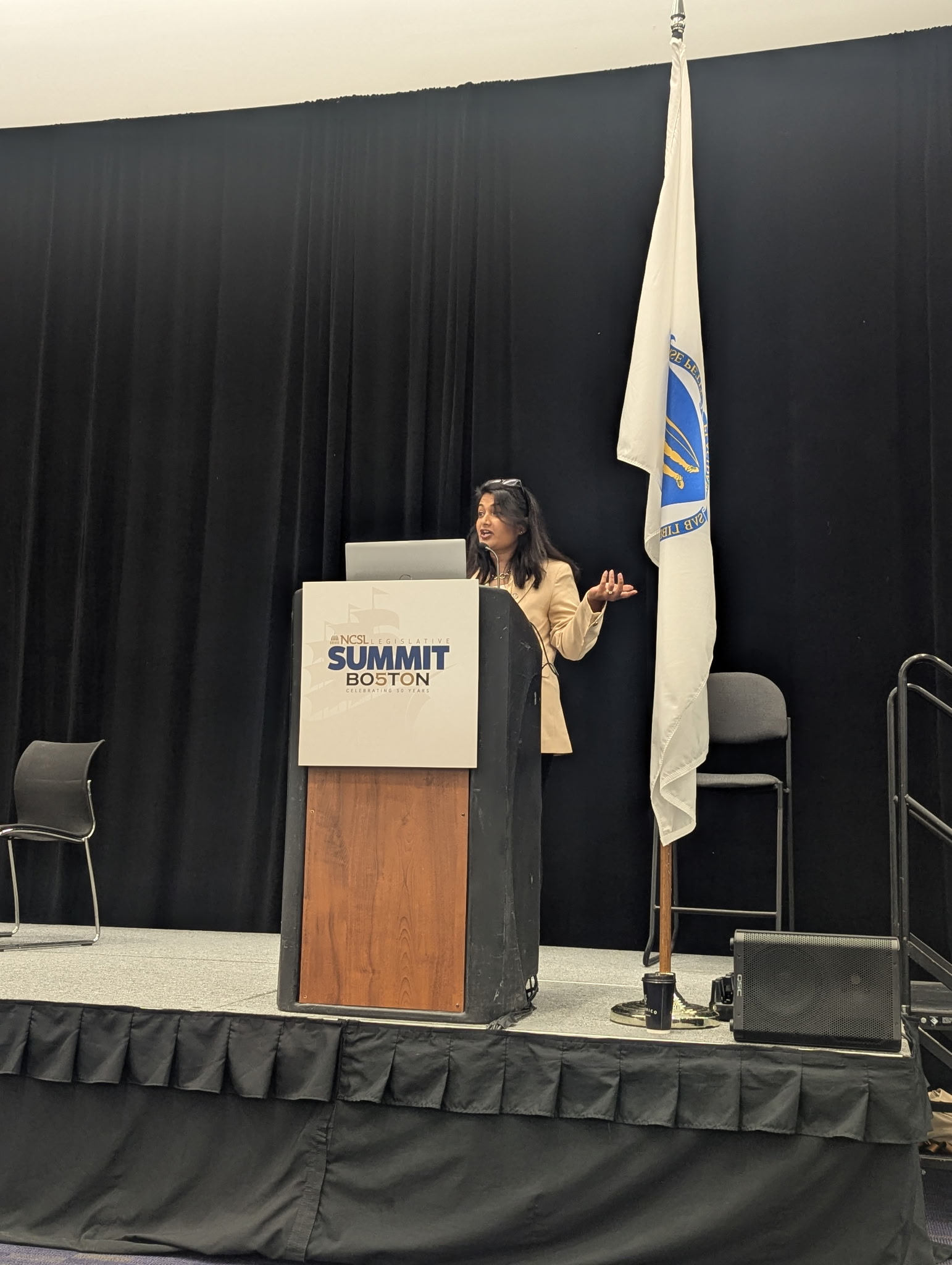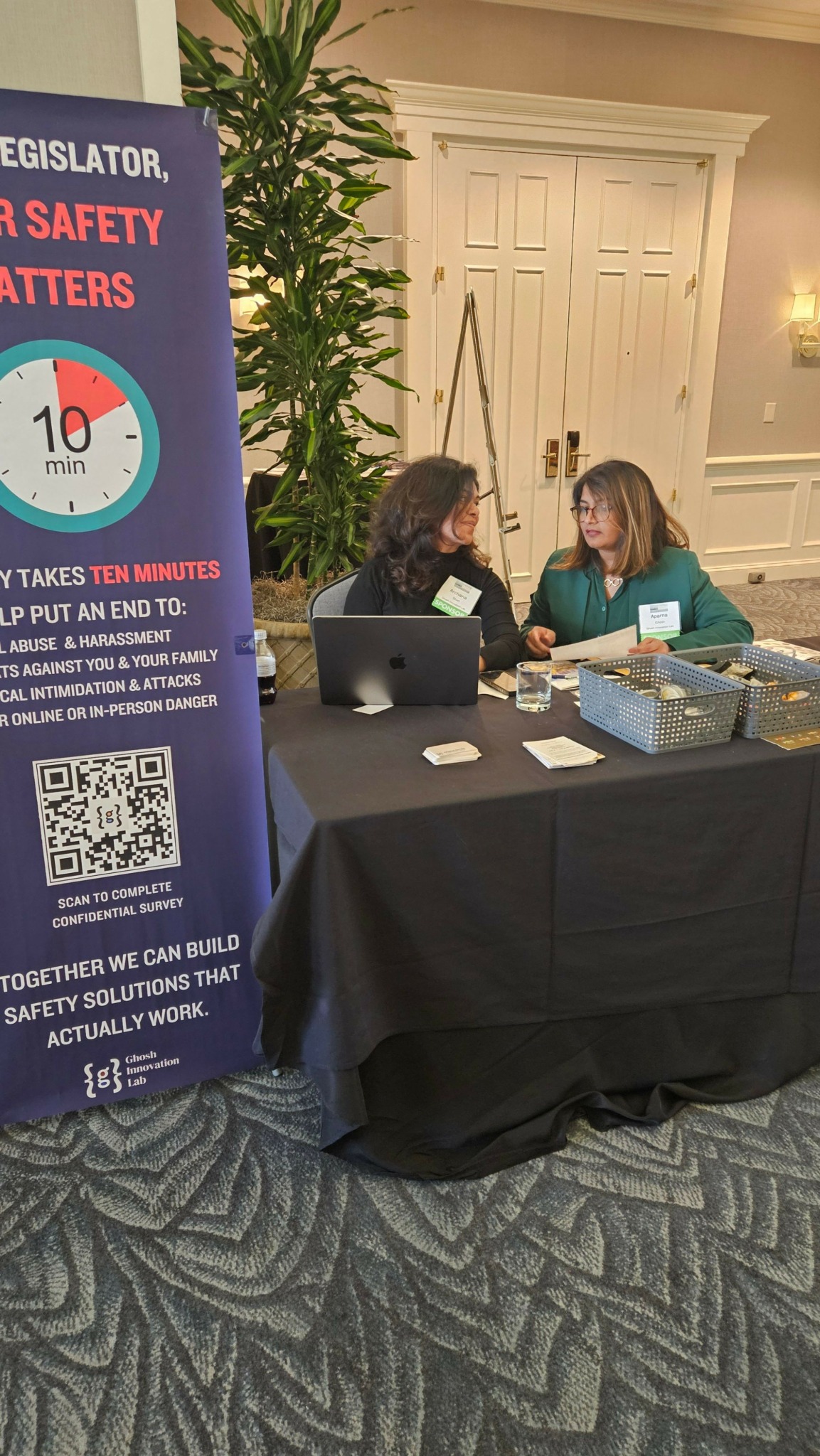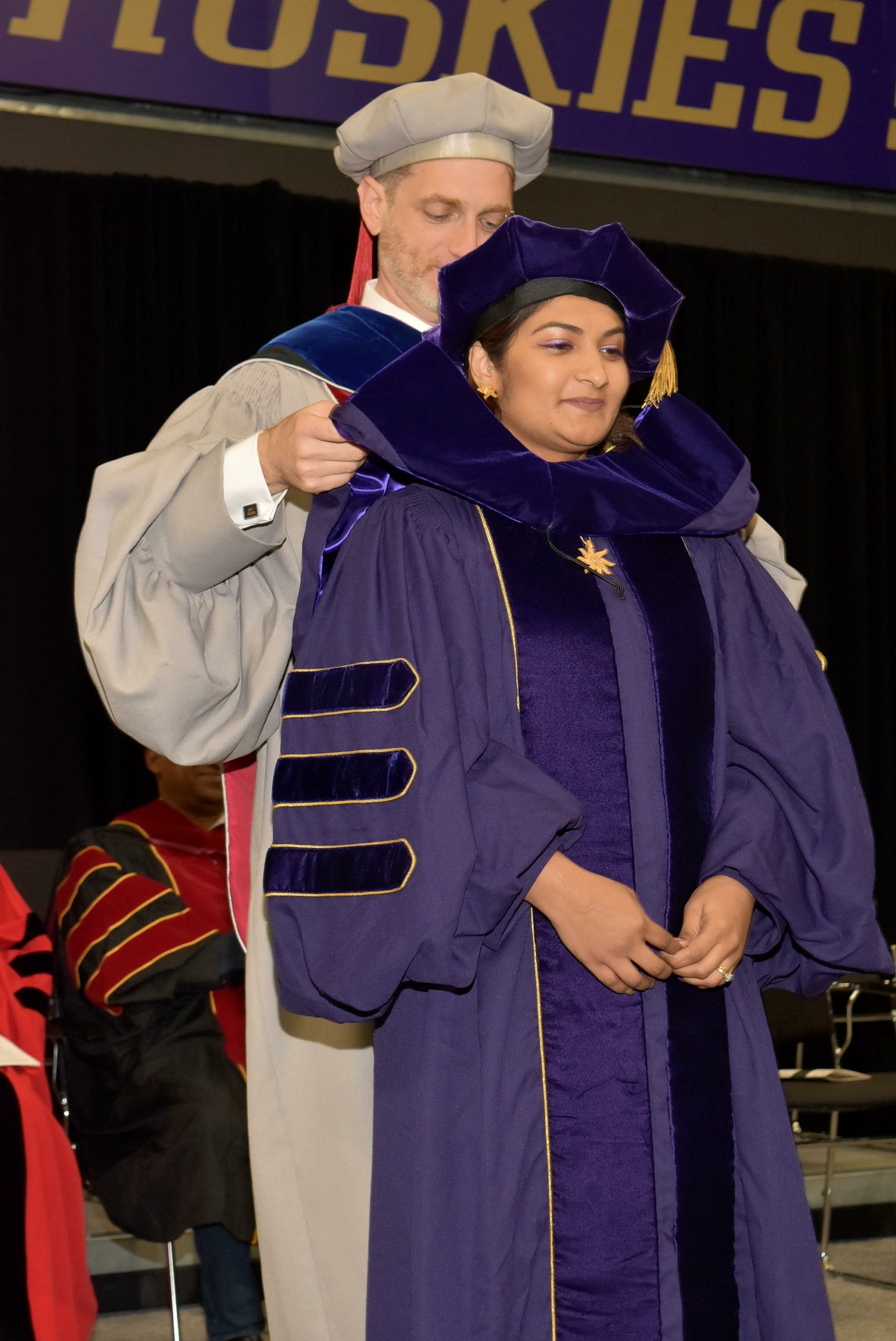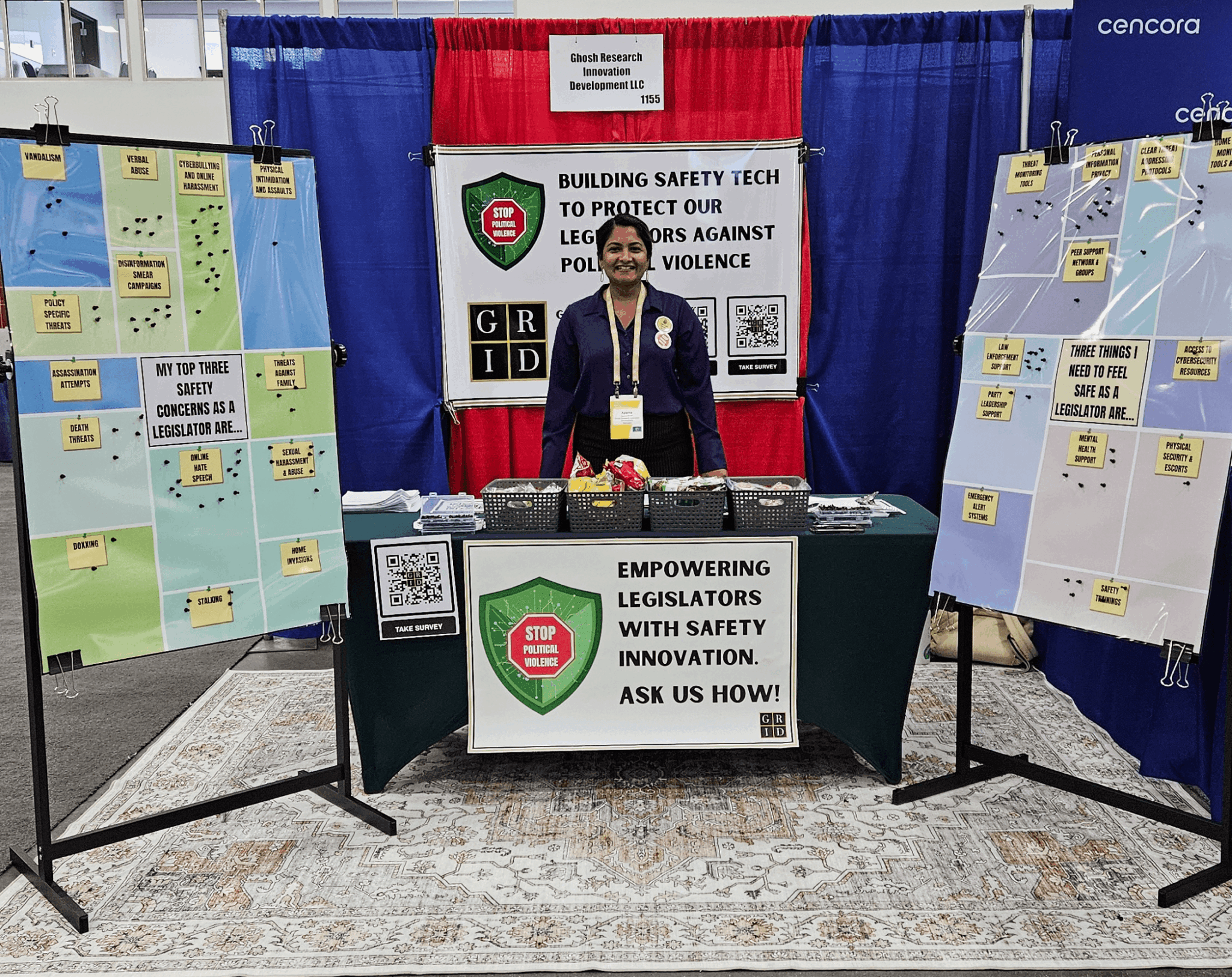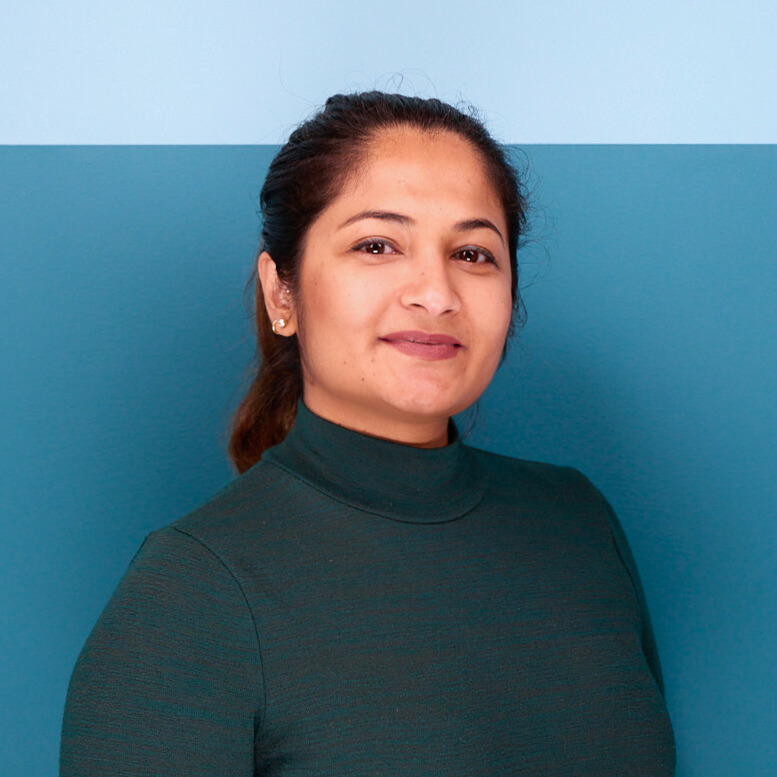Alright – so today we’ve got the honor of introducing you to Aparna Ghosh. We think you’ll enjoy our conversation, we’ve shared it below.
Aparna, appreciate you joining us today. How did you come up with the idea for your business?
Well, if you looked at my resume, I have an undergrad in computer science, a master’s in journalism, and a PhD in communication. What a unique combination, right? But I spend a great deal of my free time in introspection, and when I connect the dots of my life—my choices, the moments that have brought me here, and the values that drive me—three things become extremely clear. First, my North Star has always been impact. My father was a journalist, my mother was a professor, and throughout my childhood, the conversation was never about money, fancy things, or big titles. It was always about creating impact. Success always equaled impact.
Second, my foundational belief is that technology can be used for good. Of course there is fear of the unknown, of course technology can go wrong, and of course there is Terminator. But at the end of the day, technology can bring betterment to societies. We have all heard that before, but I grew up believing it in my core.
And third, I have always loved solving problems. Yes, math problems too, but mostly people’s problems. I listen deeply and actively, and I am always thinking, “Oh man, how can I help make it better for them?” I am definitely a therapist in an alternate universe, but therapists do not really help solve problems, so I would have been a very in-your-business kind of therapist.
Combining these three with the background noise of degrees in computer science, journalism, and research was about asking, “How can I really make an impact in the world with what I have?” Not to sound too much like a Disney princess, but after I graduated with my PhD last year, it felt a little bit like a Moana or Rey Skywalker moment where I wondered, “What lies beyond? What is my story? What is my place in all this?”
And the answer became clear.
A few years ago, I had the amazing fortune to be part of a large landscape analysis for Pivotal Ventures as a researcher, focused on understanding the barriers that women face in political office today. I spoke to many women legislators, advocacy groups, and leaders of various organizations to understand what the barriers are and how they might be addressed.
During those interviews, a lot of the things that we uncovered were just plain heart-wrenching. I spoke to a legislator from Michigan who was threatened, harassed, and even abused and shunned away by her own party members. I remember coming out of that Zoom meeting feeling sick to my stomach, remembering my time as a journalist. I was pregnant and working on an exposé, and there were people texting me things like “If you file this story, we will kill you and your unborn child.” I remembered crying on side of the pavement, me with my big third trimester belly, feeling scared and horrified, but I still went ahead and filed the story. Remembering that moment crystallized something for me: “Oh my God, these women are showing up just like I did, as public figures with so much attention and expectation placed on them, but they still show up every single day. I have to do something to make their situations better.”
At the end of that research project, we facilitated a workshop with thirty-five to forty people leading various organizations in the women-in-political-power space. We were all brainstorming how we could address some of these barriers. I remember telling my research partner, “We have put up all these flip charts with policy, training, resources, and research, but what about technology? Should we use that as another approach?” She said, “Of course. Put up the ‘Technology’ flip chart.” And I did. But unfortunately, nobody in that room chose technology as an intersectional approach. I know it sounds dramatic, but at the end of the day, I pulled the flip chart down and told my partner, “I suppose I am taking this home.”
I went back to the hotel room later that night and wrote a proposal for an idea that has now become Ghosh Innovation Lab’s mission statement: to use technology and innovation as an intersectional approach to reduce barriers that women face in office, so they can run with hope, serve with support, and stay with confidence. And that is the story.
Great, appreciate you sharing that with us. Before we ask you to share more of your insights, can you take a moment to introduce yourself and how you got to where you are today to our readers.
So that hotel room moment was really the birth of what became the Ghosh Innovation Lab. That proposal became our mission statement, and honestly, it’s guided everything we’ve built since then. When we started looking at all the different barriers women face in political office, we quickly realized that safety had to be our first focus. In today’s political climate, it’s become the most urgent barrier. Women leaders are navigating rising hostility, harassment, and violence simply because they chose to serve, and these harms don’t just endanger them personally, they disrupt the institutions they represent.
The research we published really opened people’s eyes to the scope of this problem. We’re talking about 93% of women legislators reporting various everyday harms that made them question their political engagement. Thirty percent said safety concerns made them consider leaving office entirely, and 59% reported that safety issues were actively disrupting their work. These aren’t just statistics to us, these represent real women who are trying to serve their communities but are being pushed out by harassment, threats, and violence.
What we found was that the harms are widespread but under recognized, the impacts are severe, the law doesn’t really protect them, resources are fragmented and hard to access, and policy change is painfully slow. But here’s the thing, despite all these challenges, women leaders are incredibly resilient and resourceful. They’re already developing strategies to combat feeling unsafe, from seeking training and establishing peer networks to digital security protections and restorative practices. Our role became gathering, amplifying, and sharing these strategies so every woman legislator can feel empowered to continue serving.
We approach this through what we call our SAFE framework. We help sow the seeds for policy change by providing data and insights that empower legislators to lead change in their states. We make sure they can access available resources by making safety tools and supports visible and actually usable when they’re needed most. We help them find comfort in community by building peer networks that reduce isolation and help women stay in service. And we explore alternative options by pursuing innovative approaches when traditional institutions fall short.
The way we execute this is through research, innovation, services, and empowerment. Our research gives us the evidence base, we publish quarterly safety briefs and reports that reframe safety as a democracy issue, not just a women’s issue. The innovation side is where that technology background really comes in handy. We’re building tools like GRID, our Guided Response for Intervention & De-escalation system, that integrates incident reporting, resource access, and peer support all in one platform.
We also run programs like the six-week Resilience Academy cohort-based training for safety and awareness preparation, the biweekly drop-in safe spaces called Open Circles with licensed professionals, and offer a menu of in-person workshops where we offer practical tools such risk assessment checklists, building emergency cards and choosing a safety advisory board to transform our research into pragmatic solutions. And then there’s our empowerment work, which is probably what I’m most excited about, we’re building a network of women legislators called Ambassadors of Safety who are equipped with data, information, various resilience strategies and policy roadmaps to take charge of safety-related change in their own states.
Here’s the thing that I believe really sets us apart: we’re not just going down one route — waiting for institutional change. We are using a multidimensional approach combining research and data, trainings and conversations, and technology. We are attacking this issue from so many different angles. These women need help now. So while we absolutely support policy reforms, we’re also saying, “What can we build today that makes a difference?” We’re also recognizing something that I believe gets overlooked a lot — these women are already incredibly resilient and resourceful. Our job is not to save them; it is to gather their collective wisdom and resilience, validate them, amplify them, and make sure every woman legislator has access to them.
We’ve built relationships with over 400 women legislators and developed a network of 90+ Ambassadors of Safety across 38 states. We had hundreds of attendees from across the globe at our Women’s Legislative Network Session at the NCSL Summit, and we’re facilitating these incredible conversations through policy roundtables and leadership convenings.
But you know what really drives me? It’s testimonials like the one from a Minnesota woman legislator who was out on vacation the night an assassin came to her door, the very same assassin who killed Speaker Hortman. She told us, “I wish I had seen this safety assessment checklist before the night we lost Speaker Hortman. I saw the creep on my driveway every week for 45 minutes. I would have known what to do. Now, it’s so late. So please listen to all this advice, and most of all, if you see something, say something.”
That’s exactly why I do this work.
Learning and unlearning are both critical parts of growth – can you share a story of a time when you had to unlearn a lesson?
Growing up as a girl child in India in a family with a very intelligent, hot-headed, debate-loving dad and a disciplinarian, rule-following, traditional, principal of a women’s college mother, I really had to fight if I wanted to be heard. I spent my entire childhood trying to make sure I had a voice in my own life, that I had a say in decisions that pertained to me. I had to stand up for myself and fight for what I believed in. If my parents had their way, I would be married at 17. They literally asked my first boyfriend if he would marry me. Poor kid, he ran the other way!
When I became a journalist, that voice translated into journalism perfectly. I believed everybody deserved answers. I deserved answers. I was holding systems accountable, asking scary questions to people with authority. My press card gave me a lot of freedom and power to ask those questions. My entire phase as a journalist felt like learning how to hold powers accountable through this reactive energy.
But as a social impact leader, it’s very, very different. The first couple of years, you’re just trying to figure out how to navigate this completely different landscape. I had to unlearn what I believed – that the immediacy with which you respond is directly proportional to how much you care.
Instead, I’ve had to completely rewire myself to look at the world through all the power dynamics, all the hegemonies, all the systemic and institutional structural bureaucracies and red tape. I’ve caught myself muttering many a time, “You cannot react. You cannot say the first thing that comes to mind. This is bigger than you. Your voice carries weight now, this is not about your hubris or a byline, this is about real responsibility. Be smart. Shut up.”
But I also have to be true to myself and stand up for what I believe in. As an immigrant woman, as a woman of color, I cannot keep all my thoughts to myself because my fight is not just mine anymore —it is about my family, my community, the women leaders we serve, and future generations of women that look like me. So I have had to learn to take time to say things a little more thoughtfully and really respond rather than react. And being the logical person that I am, I gave myself an algorithm.
There is a post-it note on my iMac monitor that says: “Think about everything you are about to say and ask yourself these questions. One, is it opinion or information? Two, do they really need this information? Three, is it hurtful or unkind or unfair to them or someone else? Four, what do you gain by giving them this information? And five, what do they gain with this information?” If whatever I’ve thought about passes through all of these questions and I have justifiable reason to say what I want to say, then I go ahead and say it irrespective of whether it is the most diplomatic thing to say or not. It’s just a completely different way of thinking about communication. And honestly, it’s been one of the hardest but most necessary transformations of my career. So much for a PhD in communications!
Can you open up about how you funded your business?
It’s really about relationships, and that’s the biggest lesson I’ve learned. In the nonprofit world, relationships equal funding, and authenticity is everything. I initially envisioned this as an LLC focused on research and technology to reduce barriers women legislators face. But the night I went to my hotel room to build the proposal…I set off the domino effect of genuine connections.
We were sitting there at midnight waiting for our Uber to pick us up when I told someone, let’s call them A, who worked at a large philanthropic foundation, the idea. We spoke about how we needed to help women in politics with all the resources that we had access to. She immediately said, “You should totally talk to C,” and then edited my proposal, giving me feedback about how to present such ideas to foundations. That authentic moment of sharing an idea while waiting for a ride led to everything. Thank you, A! Person C, at the same foundation, picked up our proposal and asked, “Why an LLC? If you are mission-driven, this could be a 501c3.” I literally had to ask, “What’s a 501c3?” because I’d never worked in the nonprofit space before. She smiled, explained it to me graciously, and then said there was a fund she knew that was accepting applications right then.
Within three days, I converted the organization to a nonprofit and submitted the grant application. Between launching the nonprofit, which took a lot more work because of the website design and social media announcements etc., and getting our first seed funding grant, there was just one week! Not to be cheesy, but I truly believe these relationships are guided by angels. Angels in the most practical sense of the word. You know that line from Paulo Coelho’s The Alchemist about how “When you dream a true dream, the whole universe conspires to make it happen”? That is what it is. Money flows where there is good intention, and I truly believe in the network of angels working through these authentic human connections.
Contact Info:
- Website: www.ghoshinnovationlab.org
- Linkedin: https://www.linkedin.com/company/ghosh-innovation-lab/
